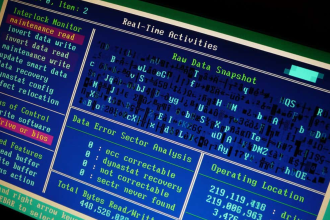Molded case circuit breakers are valuable devices. They ensure safe and reliable power distribution in electrical systems. Their compact build and multiple circuit protection make them common in commercial, industrial, and residential applications. This article overviews molded case circuit breaker components, functions, and protective operation.
Molded Case Circuit Breaker: Overview and Components
An MCCB is a circuit protection device. It’s enclosed in a molded plastic housing. It offers protection, control, and isolation functions for electrical circuits. At the heart of an MCCB circuit breaker are its live parts, which are all sealed inside the molded case for safety. Major components include:
- Frame
The frame forms the sturdy base and enclosure for all other internal live parts of the molded case circuit breaker. Its robust yet compact flame-retardant thermosetting plastic provides effective electrical insulation for the live components. The material is non-combustible. It helps prevent fire propagation within the molded case circuit breaker in case of an internal fault. In this way, it ensures user and equipment safety.
- Operating Mechanism
The operating mechanism is the core that enables ON/OFF control and fault-tripping functions. It contains a toggle operator for manual switching of main contacts along with a trip bar assembly mechanically linked to the trip unit. Upon detecting an overload or short circuit, the trip unit triggers the bar to swiftly separate the contacts via the operating mechanism.
- Arc Chute
The arc chute contains arc extinguishing materials that safely dissipate the arc energy produced when contacts open during tripping. It allows rapid quenching of the arc by dividing and conducting it away harmlessly, facilitating fast fault clearance without internal damage or risk of re-ignition.
- Trip Unit
Most MCCBs incorporate a thermal-magnetic trip unit for protection against overcurrent faults. Whether fixed or adjustable, it continuously monitors current flow through bimetallic and electromagnetic elements. If an overload or short circuit is sensed, the trip unit instantly activates the operating mechanism to swiftly disconnect the supply via the main contacts.
Working Principle of a Thermal-Magnetic Molded Case Circuit Breaker
A thermal-magnetic MCCB works by combining thermal and magnetic elements for protection. The thermal element continuously monitors current flow through a bimetallic strip that heats up proportionally. It trips the breaker if the current exceeds the rated thermal capacity for a given period. The magnetic element uses an electromagnetic coil to instantaneously trip during short circuits when the current surges well beyond the magnetic threshold. During faults, the trip bar assembly pulls the operating mechanism to rapidly separate the contacts, clearing the fault in milliseconds.
Functions of Molded Case Circuit Breaker
MCCBs perform two critical protection functions for electrical systems and loads:
- Overloading Protection
The thermal element continuously monitors current flow through a bimetallic strip. As the strip heats up proportionally due to excessive current beyond the rated capacity, it triggers the trip mechanism to automatically disconnect the faulty circuit after a preset operating time. This prevents equipment from potential damage caused by prolonged overheating under overload conditions.
- Short Circuit Protection
The magnetic trip element contains an electromagnetic coil that measures current levels very accurately. It instantaneously trips the breaker if the short circuit current surges well above the pick-up threshold within a fraction of a second. This rapid fault-clearing capability isolates any incipient faults and hazardous arcing immediately before they can cause any equipment or wiring damage.
Conclusion
Molded case circuit breakers are vital protection devices that ensure safe and reliable power distribution through electrical systems. As the first line of defense against overloads and short circuits, an MCCB contains components like frames, operating mechanisms, arc chutes, and trip units that work together to quickly detect faults. Thermal-magnetic MCCBs combine thermal and magnetic elements to continuously monitor current flow and instantly trip if overloads or short circuits are detected, clearing faults in milliseconds.
CHINT is one of the leading circuit breaker manufacturers with years of industry experience. As a technology innovator, the brand designs MCCBs with advanced thermal-magnetic, microprocessor-based, and communication capabilities. Its comprehensive product portfolio and global service network make CHINT products ideal for reliable overload and short circuit protection in various applications. To learn more about CHINT MCCBs and their advantages, visit the company’s website.












